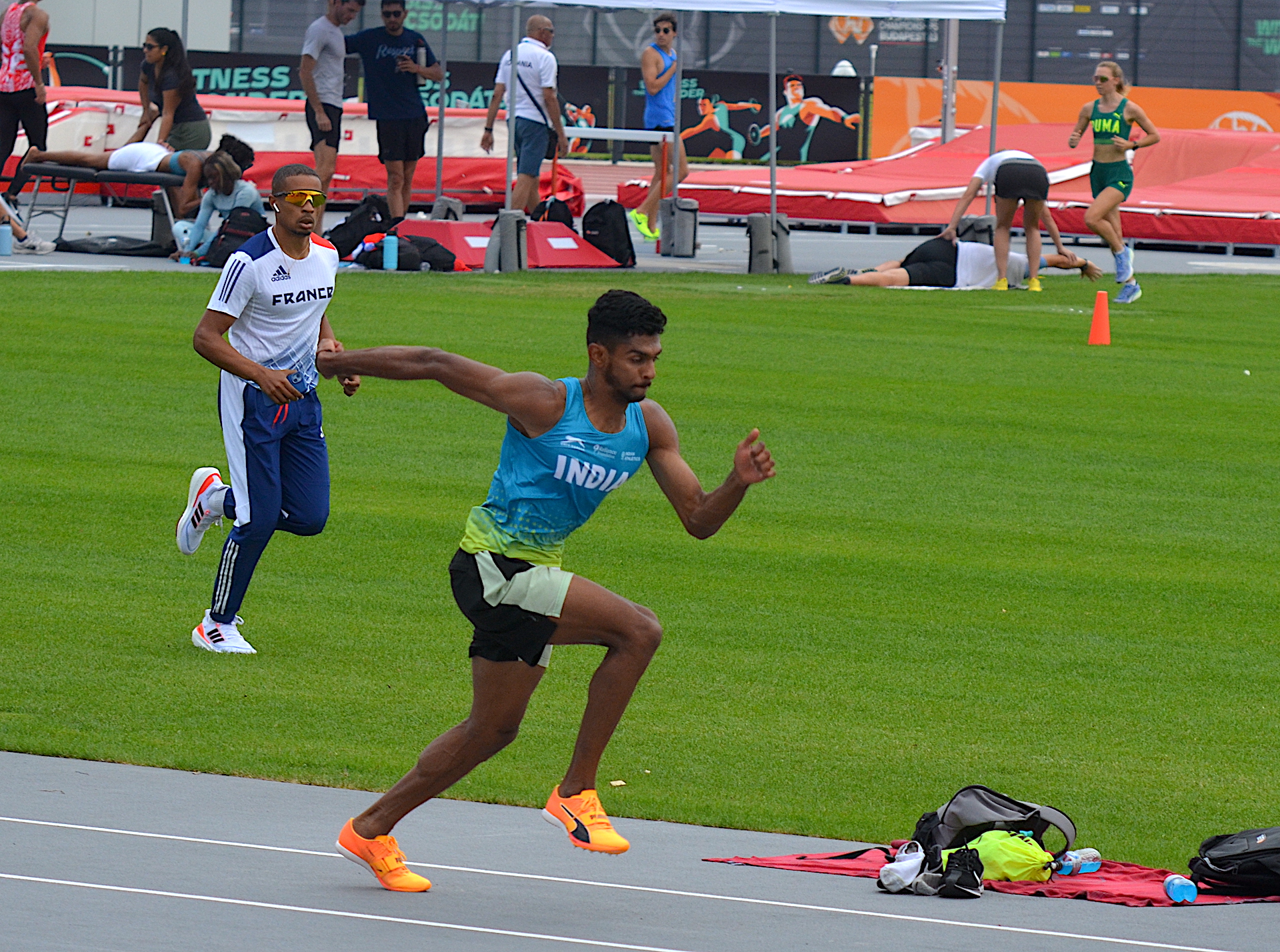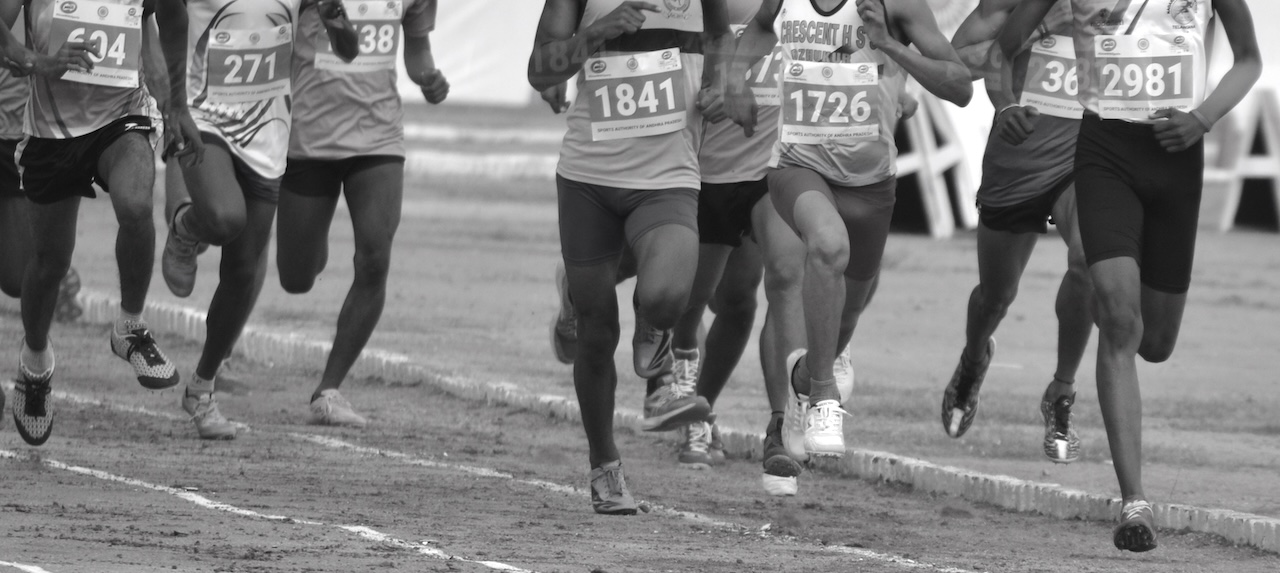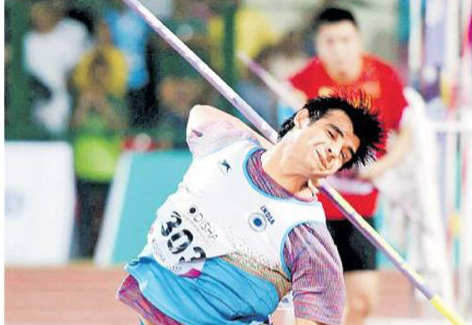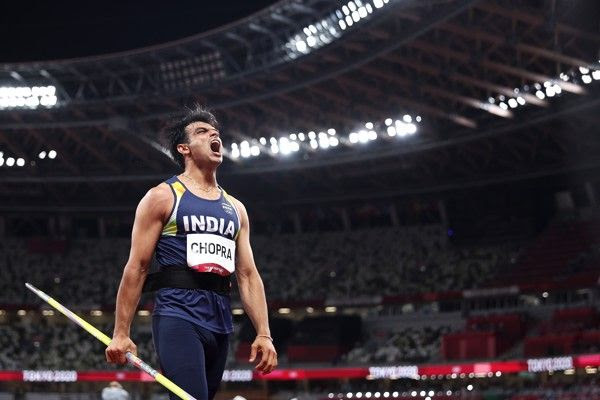Long Jumper M Sreeshankar, ranked sixth in the world, wrapped up his training session in the warm up track at the National Athletics Centre in Budapest and engaged himself in an animated chat with another athlete. The track was abuzz with stars ahead of the World Athletics Championships, slated for a start on Saturday, but this piece of action caught the eye.
“I do not know him. ‘Bro, I am a big fan of yours. Can I click a photo with you?’ he asked. And I happily agreed to pose for a photo with him,” Sreeshankar told us moments later. But it is a reflection of India’s growing stature as an athletics nation, not in the least because of Neeraj Chopra’s rise as an Olympic Champion and a World Championships silver medalist.
Last year’s World Championships saw an unprecedented six Indian finalists – Neeraj Chopra and Rohit Yadav in men’s Javelin, Annu Rani in women’s Javelin, Avinash Sable in men’s 3000m Steeplechase, Sreeshankar in men’s Long Jump and Eldhose Paul in men’s Triple Jump. The Indian camp believes it can match that in Budapest since much attention has been paid to preparation.
Team Leader Anju Bobby George, the first Indian to medal at the World Athletics Championships when she won women’s Long Jump bronze in 2003 in Paris, pointed out that the positive attitude of the contemporary Indian athletes is one of the reasons for the optimism. “They have come here to go all out and win a medal,” she said. “They have had better support and competitive exposure.”
Jumpers will have to replicate early season form
Viewed critically, of the Indians competing in Budapest, only Neeraj Chopra will start favourite to win a medal. Of course, men’s Long Jumpers Jeswin Aldrin and M Sreeshankar have the world’s two best leaps this season and Triple Jumper Praveen Chithravel’s 17.37m in Cuba is in the fifth spot. Suffice to say, it remains to be seen if the jumpers can replicate that early season form.
The Indian interest in the World Athletics Championships begins with the opening event, the men’s 20km Race Walk where three walkers join a star-studded field in a 1km circuit with the start and finish at the iconic Heroes Square. Akashdeep Singh, Paramjeet Singh Bisht and Vikash Singh will do themselves a world of good if they are able to match, if not better their personal best times.
The biggest Indian athlete in action on Saturday will be men’s World No. 15 Steeplechaser, Avinash Sable who stirred the nation with his silver medal in the Commonwealth Games last year. His first task will be to finish in the top five in the opening heat which features three runners who have produced faster times than his 8:11.63 this season and are ranked higher than him.
Two-time Asian men’s 1500m champion Ajay Kumar Saroj, another ward of middle- and long-distance coach Scott Simmons, will have his task cut out in showing the results of long hours of training in Colorado Springs. His response to the challenge of competing in a group where all runners, but one, have better personal and season best times than him will be interesting to watch.
Shaili Singh seeks a personal best jump in qualification
The youngest Indian, Shaili Singh, is seeking a personal best in the women’s Long Jump while coach Bobby George expects the 19-year-old to get to the final despite the lists and world ranking suggesting otherwise. “She has always handled the pressure of qualification well and despite having to spend a month away from training because of Covid, she can get to the final,” he said.
Yet, more than her, it would be the Indian trio on the men’s Triple Jump, World No. 11 Praveen Chithravel, World No. 16 Abdulla Aboobacker and last year’s finalist Eldhose Paul, which will be under greater pressure. Each of them will realise that he has to bring his A game to the fore on Saturday to make it to the 12-man final.
In some ways, their performance on Saturday will reflect Indian athletics’ trajectory of development. Praveen Chithravel and Abdulla Aboobacker will also offer an assessment of the justification of the immense faith that fans have developed because of impressive efforts earlier in the season. And Eldhose Paul’s ability to bounce back from injury and be counted will be on test.
India has to tackle doping on war-footing
Of course, there have been setbacks in India’s journey, notably with doping rearing its head ever so often. At the media conference after the World Athletics Congress on Thursday, Lord Sebastian Coe was asked if he was concerned that two of the new Vice Presidents came from countries – ostensibly Kenya and India – that did not have the best anti-doping record.
While Lord Coe dwelled on Kenya for a fair amount of time, he did not name India, referring it as the second country and was brief. The World Athletics President said he had spoken with the Federation President and to any number of organisations there and they knew that there are challenges that need to be met.
AFI President Adille J Sumariwalla, who was elected World Athletics Vice President, was candid in his response when I asked him if he felt any pressure because of this. “Absolutely not,” he said. “We are going after the cheaters. From just over a hundred tests a year, we are now collecting 1500 samples annually.
“I was instrumental in getting the National Anti-Doping Bill passed in Parliament. I working closely with the Athletics Integrity Unit. We are not running away from the challenges. We are facing them. We are emphasising on more education and more testing. The more we test, the less incidence of doping there will be,” he said.
While that battle continues on several fronts, the challenge for the Indians competing in Budapest will be to take their game to the next level and not be identified as athletes who performance graphs show sharp spikes. That journey may well begin now if athletics in India is to go beyond one athlete being spoken of as the only medal prospect in global competitions.



